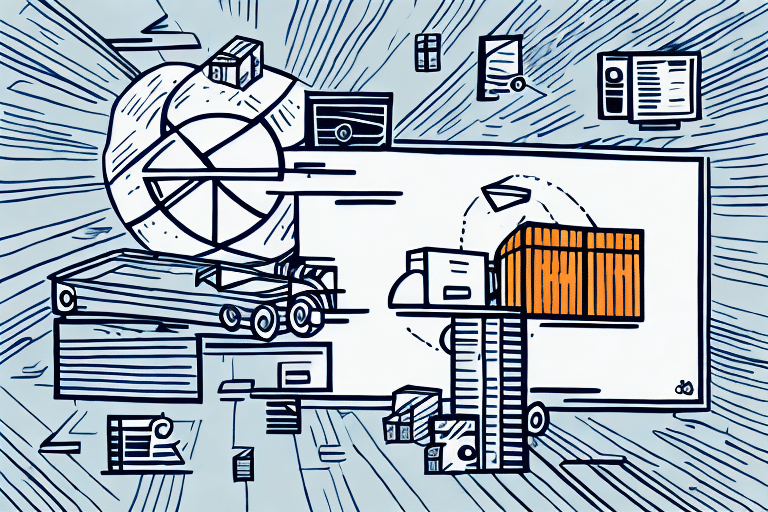What Is Ecommerce Order Fulfillment and Its Process?
In today's highly digitized world, ecommerce has become a common method of doing business. Driven by the increasing demand for convenience and speed, ecommerce businesses have been thriving in recent years. However, success in this field requires a firm understanding of order fulfillment and its processes. This article provides comprehensive insights into ecommerce order fulfillment, outlining what ecommerce retailers need to know to efficiently meet customer demands.
Understanding Ecommerce Order Fulfillment
Basics of Order Fulfillment
Ecommerce order fulfillment refers to the entire process of receiving, packaging, and shipping orders placed by customers in your online store. It’s a crucial aspect of ecommerce since it directly impacts the customer experience. Inefficiencies or delays can lead to negative customer feedback and high churn rates, ultimately affecting sales. Therefore, developing and implementing an efficient order fulfillment process that delivers products quickly, securely, and accurately is essential for ecommerce success.
Importance of Inventory Management
A key component of a successful order fulfillment process is inventory management. Keeping track of inventory levels ensures you have enough stock to fulfill orders promptly. Overstocking can lead to unnecessary expenses, while understocking can result in delayed shipments and dissatisfied customers. Implementing an inventory management system that allows you to track your inventory levels in real-time and automatically reorder products when stock levels reach a certain threshold is crucial. This ensures that you always have sufficient stock to fulfill orders promptly, leading to a positive customer experience and increased sales.
Types of Ecommerce Order Fulfillment Methods
In-House Fulfillment
In-house order fulfillment involves managing and executing the entire order fulfillment process internally using your staff, space, and resources. This method allows for greater control over the entire process, from receiving and storing inventory to packing and shipping orders. However, it can be more time-consuming and expensive than outsourcing.
Outsourced Fulfillment
Outsourced order fulfillment involves using a third-party service to handle the entire order fulfillment process on your behalf. This can be a cost-effective and efficient option, as third-party providers have the expertise and resources to handle the process effectively. However, it may result in less control over the process and potential communication issues.
Hybrid Fulfillment
Hybrid order fulfillment combines both in-house and outsourced fulfillment methods to meet the specific needs of your ecommerce business. This approach allows businesses to maintain control over certain aspects of fulfillment while leveraging the efficiency of third-party providers for others.
Pros and Cons of In-House vs Outsourced Order Fulfillment
In-House Fulfillment
One of the main advantages of in-house order fulfillment is the ability to provide a personalized experience for customers. With full control over the process, businesses can customize packaging, include personalized notes, and ensure orders are shipped timely. This can lead to increased customer satisfaction and loyalty. However, this level of customization can be time-consuming and may require additional staff to manage the process.
Outsourced Fulfillment
Outsourced order fulfillment offers advantages such as access to specialized expertise and technology. Third-party logistics providers often have advanced systems for inventory management and shipping, leading to faster and more efficient order fulfillment. Additionally, outsourcing provides scalability, allowing businesses to quickly adapt to changes in demand without needing to invest in additional resources. However, outsourcing can lead to communication challenges and a lack of control over the fulfillment process, potentially resulting in errors or delays.
Choosing the Right Ecommerce Fulfillment Provider
Factors to Consider
Selecting the right ecommerce fulfillment provider can be daunting, given the available options. Key factors to consider include the provider's experience and reputation, availability of services, pricing, and technology capabilities. An ideal fulfillment partner should offer efficient and flexible services with a robust technological infrastructure to handle customer orders and requirements.
Location and Capacity
The location of the fulfillment provider is another important factor. The closer the provider is to your customers, the faster the delivery times and the lower the shipping costs. This is especially crucial if you have a large customer base in a specific region or country. Additionally, consider the provider's capacity to handle your business's growth to ensure they can accommodate expansion without compromising on quality or service.
The Ecommerce Order Fulfillment Process: A Step-by-Step Guide
1. Receiving Orders
Order fulfillment begins with receiving orders from your online store. This involves payment verification and inventory management to effectively track orders.
2. Processing Orders
Once an order is received, it is processed by verifying the payment details and preparing the order for picking and packing.
3. Picking and Packing
In the picking and packing stage, accuracy and speed are prioritized to ensure that the correct products are selected and packaged securely for shipping.
4. Labeling and Shipping
After packing, orders are labeled and shipped. Parcel tracking and carrier selection are important to ensure timely deliveries and provide customers with tracking information.
5. Returns Management
Handling returns and exchanges is a crucial part of the fulfillment process. This includes having clear policies and procedures for customers to follow, as well as a streamlined process for receiving and processing returned items. Effective returns management minimizes the impact on your business and maintains customer satisfaction.
Customer Communication
Regular communication with customers about their order status, tracking information, and any delays or issues is essential for maintaining a positive customer experience. Automated emails or text messages, along with a customer portal for order tracking, can enhance transparency and trust.
Common Challenges in Ecommerce Order Fulfillment
Ecommerce retailers face various challenges in the order fulfillment process, including managing inventory, shipping errors, and handling returns. To overcome these challenges, implement inventory management and quality control systems, utilize fulfillment analytics, and partner with reliable fulfillment providers. Automation can also reduce errors and enhance accuracy throughout all phases of the fulfillment process.
Best Practices for Efficient Ecommerce Order Fulfillment
- Inventory Optimization: Reduce carrying costs while ensuring orders are accurate and dispatched on time.
- Invest in Automation and Technology: Utilize barcoding, robotics, and predictive analytics to provide data-driven insights and streamline the fulfillment process.
- Standardize Fulfillment Processes: Implement standardized procedures and quality controls to enhance efficiency.
- Maintain Clear Communication: Ensure transparent communication with customers to improve satisfaction and trust.
Tools and Technologies for Streamlining Order Fulfillment
Leveraging technology can significantly streamline the ecommerce order fulfillment process. Key tools and technologies include:
- Order Management Systems (OMS): Automate and manage the entire order lifecycle from order placement to delivery.
- Warehouse Management Systems (WMS): Optimize warehouse operations, including inventory tracking, picking, and packing.
- Inventory Management Software: Monitor and manage stock levels in real-time to prevent overstocking or understocking.
- Forecasting Tools: Use predictive analytics to anticipate demand and adjust inventory accordingly.
These tools help manage and automate critical stages in the order fulfillment process, enabling businesses to focus on core activities, reduce errors, lower costs, and optimize performance.
Measuring Success: Metrics to Track for Effective Order Fulfillment
Measuring the success of order fulfillment is crucial for improving customer satisfaction, increasing sales, and identifying areas for improvement. Essential metrics to track include:
- Fulfillment Accuracy: The percentage of orders correctly fulfilled without errors.
- Order Processing Time: The time taken to process an order from receipt to shipment.
- Shipment Times: The time taken for orders to be delivered to customers after shipment.
- Inventory Accuracy: The precision of inventory records compared to actual stock levels.
- Operational Costs: The costs associated with the fulfillment process, including labor, shipping, and inventory management.
By monitoring these indicators, ecommerce businesses can identify areas for improvement, enhance their operations, and make informed decisions to grow their enterprise.
Future Trends in Ecommerce Order Fulfillment and Logistics
The ecommerce industry is continuously evolving, with new technologies such as drones, robots, and automation being introduced. The demand for faster and more accurate fulfillment processes is increasing. Ecommerce businesses need to stay ahead of trends and adapt to customers’ evolving needs. Future trends include:
- Artificial Intelligence and Machine Learning: Providing real-time insights and predictive analytics to enhance fulfillment speed and efficiency.
- Automation: Increasing use of robotics and automated systems to handle repetitive tasks, reducing errors and speeding up the fulfillment process.
- Sustainable Practices: Implementing eco-friendly packaging and efficient logistics to meet growing consumer demand for sustainability.
- Same-Day and Next-Day Delivery: Expanding delivery options to meet consumer expectations for rapid fulfillment.
In conclusion, understanding order fulfillment is essential for ecommerce businesses to achieve sustainable growth and customer loyalty. Implementing best practices, reliable tools and technologies, and partnering with fulfillment experts can enable ecommerce retailers to efficiently meet customer demands and grow their businesses in the future.




















